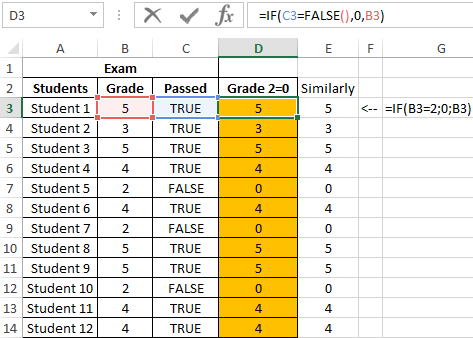


The column Package indicates the Quantity of each unit. To get the right amount you will have to account for the quantities in each of the package sizes. You want to create a column that shows the number of items sold on each line. It shows the quantity sold of each order with the respective unit price. Imagine working with the following dataset.
#How to sum a column in excel if a text is false how to#
With some basic examples you easily learn how to write conditional if statements in Power BI. You can paste below examples directly in the Custom Column formula box. Now let’s have a look at example if-statements. Here you can include combinations of hard-coded values, functions, columns, and parameters for both the if-condition and the true and false– expressions. The custom column formulas allow for more complexity. This includes to column reference in your formula In Custom Column dialog box allows you to: To create one you can click the Custom Column button found in the Add Column tab of the ribbon. When you need more complex if-statements you can resort to the Custom Column. To address these limitations this post focuses on writing if-statements using a Custom Column. Returning a calculation that combines these three is not possible in the interface. the result of a true or false expression can only be a hard-coded value, column value, or parameter.You would need to add a helper column to make these comparisons. Others (like Date.Year, Text.Start, Text.Proper, etc.) can’t be performed through the provided menu. evaluations can only be done with the operators provided in the default menu.Using this method prevents you from creating if-statements involving operators like and, not, and or. adding complex if statements to test conditions that include multiple columns is not possible.For more complex expressions however, you soon stumble upon the limitations of the UI. Options are similar to the Output field.Ĭreating a conditional column using the User Interface (UI) may work for basic expressions. Else: When the condition is false you can specify what to do.Output: If the condition is met, what should it return? This can be a value, column value, or parameter.This value together with the Column Name and Operator makes up a condition.

Value: You can enter a value, or select a column or parameter to compare your evaluation against.Date: is before, is after, is equal to, does not equal, etc.Numbers: equals, does not equal, is bigger than or equal to, etc.Text: begins with, does not begin with, equals, contains, etc.Operator: selections depend on the data type of the select Column Name.Column Name: The column to evaluate your if-condition against.New Column Name: Enter the name for your new column.You can use this menu to set up conditional logic. It allows you to create basic if-statements.Īfter clicking on Condition Column, the Add Conditional Column menu pops up: You can go to the Add Column tab in Power Query, and click on Conditional Column. The easiest way to add a conditional statement is by using a Conditional Column. Using the user interface one could either add a Conditional Column or write it from scratch by adding a Custom Column. You can find both in the Add Column tab in the Power Query ribbon. There are two easy ways to add an if-statement. These show the start and end of the function.Ģ.

The words if and else determine the beginning and end of an if function.Īrguments are always provided between parentheses. Separates arguments by a default separator. Separates arguments by the lowercase words then and else. Yet Excel automatically converts lowercase to uppercase. Capitalizing any letter in the words if, then, and else throws an error. The if function in Power Query differs from Excel in three ways. IF( "if-condition", "true-expression", "false-expression" )


 0 kommentar(er)
0 kommentar(er)
